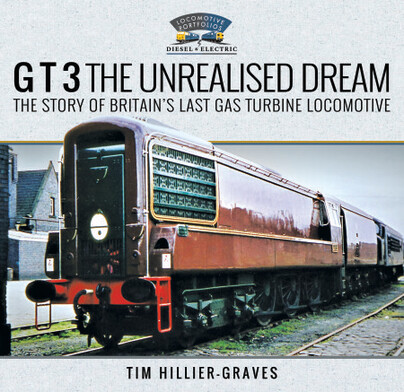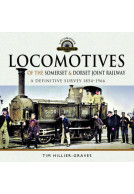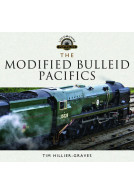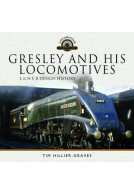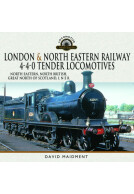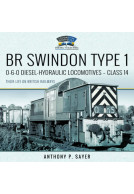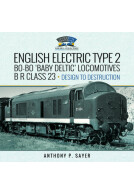G T 3 The Unrealised Dream (Hardback)
The Story of Britain's Last Gas Turbine Locomotive
Imprint: Pen & Sword Transport
Series: Locomotive Portfolios: Diesel and Electric
Pages: 168
ISBN: 9781036106669
Published: 21st January 2025
(click here for international delivery rates)
Order within the next 5 hours, 42 minutes to get your order processed the next working day!
Need a currency converter? Check XE.com for live rates
| Other formats available | Price |
|---|---|
| G T 3 The Unrealised Dream ePub (158.1 MB) Add to Basket | £18.99 |
During the 1930s, with the end of steam locomotion being actively considered, many looked to develop engines powered by diesel and electricity. But for the coming of war in 1939, and the acute recession that followed, much more might have been accomplished. Nevertheless, the die had been cast and during the late 1940s and 1950s designers stepped up their efforts to find efficient and effective alternatives to steam. Amongst their number was John Hughes who, whilst working for English Electric designing turbine engines, saw how this power source might be used to drive locomotives. In part he was encouraged in these endeavours by William Stanier’s 1935 introduced Pacific ‘Turbomotive’ and wished to continue this experiment and exploit its potential more fully.
For some the development of diesel and electric engines was the only logical course to take, but not Hughes who doggedly pursued his dream of seeing gas turbine engines dominating Britain’s railway network. Despite many setbacks, and lack of funds, he refused to give up and eventually saw his locomotive, GT3, built and then begin a prolonged period of trial running. But having finally achieved this ambition, the powers that be decided that the experiment had gone far enough and would go no further, much to Hughes’ anger and frustration.
This is a ‘what might have been story’ which, although ultimately unsuccessful, tells us much about the nature of design engineering and the need for determined, radical thinkers who are prepared to push back scientific boundaries. In this case GT3 came close to being the first of a type of engine that might have changed the direction Britain’s railways took as steam came to an end. As such it is a near miss worthy of remembrance.
To aid this work Hughes left a unique archive of documents, drawings and photos, in public and private hands, to help us understand the nature of his work and what drove him on despite the long odds he faced.
"This is the fascinating story of Britain’s last gas turbine locomotive. As a country we led the way in railways beginning with steam gradually giving way to diesel and latterly electric locomotives which we see today. While electrified railways have been in the UK and the continent since before WW1, the industry has always looked for something better. The first naval turbine driven yacht was laid down in 1894, and a turbine driven locomotive sat alongside the first Flying Scotsman at a Wembley exhibition in 1924. During WW2 jet aircraft became reality and turbines were developed to power major warships and subsequently current tanks. The GT3 saw mainline trials in 1961 to see whether gas turbines had railway applications. The trials proved successful, but gas turbines of the day were not designed for the changes in demand that rail operation incurs, which led to inefficiencies. This very well illustrated and comprehensive book sets this all out clearly. The author concludes that the locomotive was really built at the wrong time and perhaps critically to a 4-6-0 design that was outmoded by 1960."
Brian Smyth - York Model Engineers Newsletter
GT3 The Unrealised Dream. The Story of Britain’s Last Gas Turbine Locomotive by Tim Hillier-Graves and published by Pen & Sword in 2025 is an admirable account of a railway enterprise which was "unrealised.” The author, with extensive research and engineering experience, recounts the story of a locomotive that should have succeeded but, alas, was shaped like a steam engine rather than a new and enterprising machine like an English Electric Deltic.
Rob Shorland-Ball - Author
The book is very well designed and illustrated though, ironically, it is presented as one of Pen & Sword Locomotive Portfolios.
This book is a delight to read with many interesting drawings and photographs and I thoroughly commend it – and it makes you think too!
About Tim Hillier-Graves
TIM HILLIER-GRAVES was born in North London during 1951. On leaving university he served as an officer with the Royal Navy, seeing wide service on land and sea. For much of this time he specialised in weapon development projects, specifically missiles and heavyweight torpedoes, and worked alongside BAe, Marconi Space and Defence Systems and McDonnell Douglas in the process. In support of this work, he undertook prolonged periods of study and research at the Royal Naval College, Greenwich, and the Royal Military College of Science, Shrivenham. Late in his career he changed specialisms to become Head of Investigations for the MoD’s Estates Organisation. From this he moved on to become Head of Finance and Planning and then into Human Resource Management where he specialised in outsourcing to industry. Then as an Assistant Director he took on responsibility of housing for military personnel. He retired in 2011 to focus more fully on writing biographies and books related to military, aviation and engineering matters.







